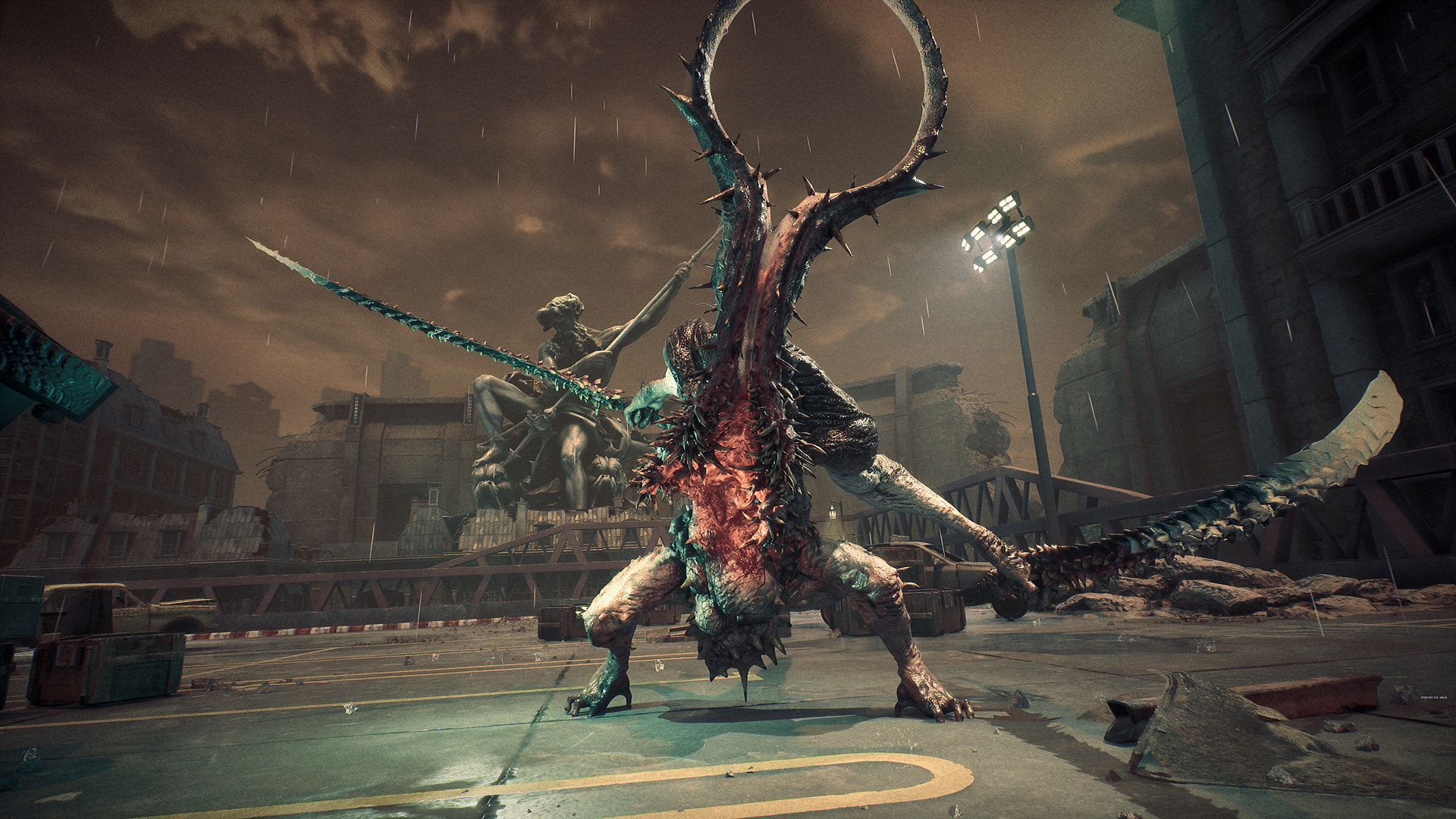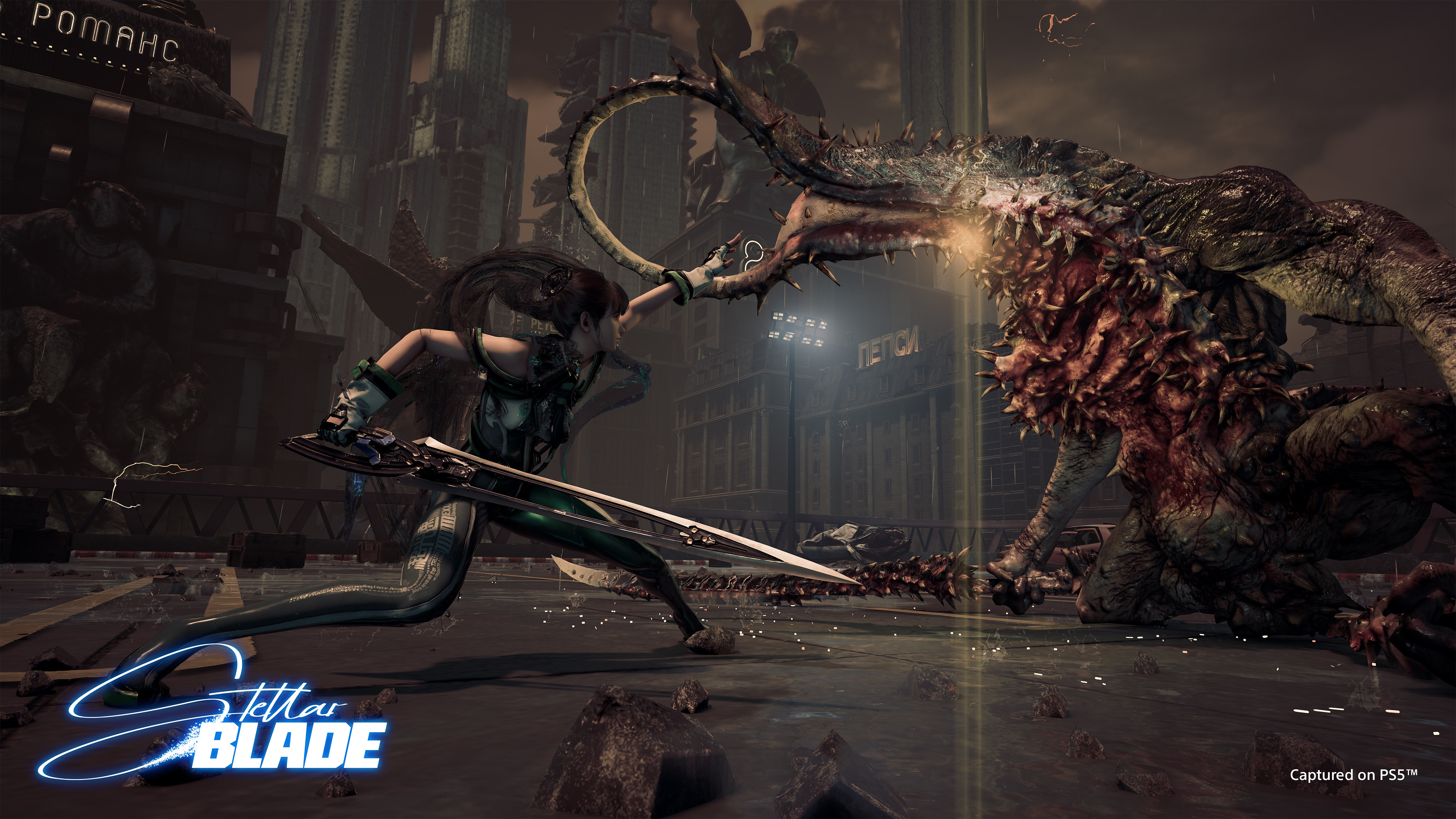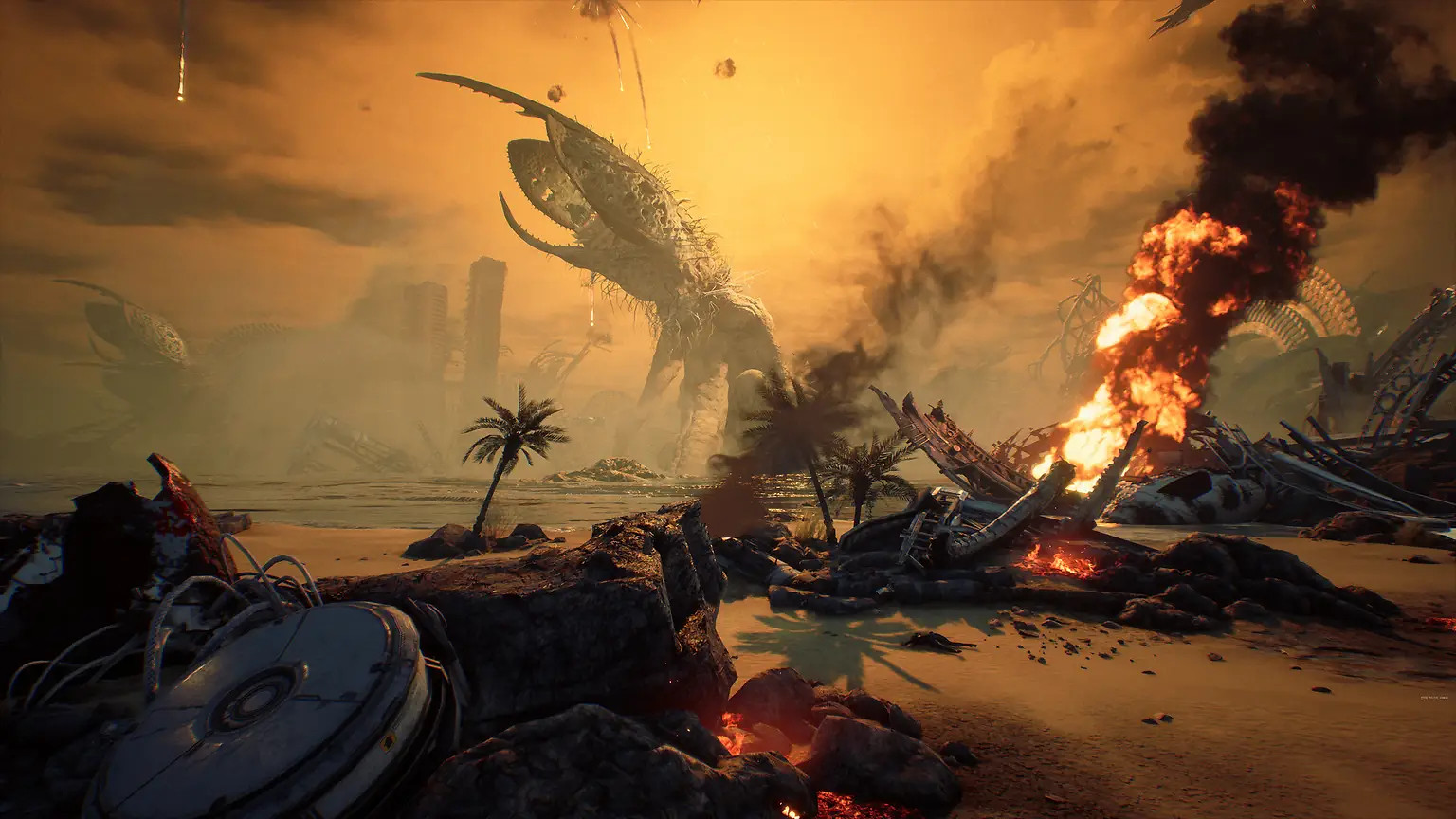Mixing type, motion, and fearsome monsters is a acquainted method for achievement in motion video games. Nonetheless, with its first PlayStation title, Stellar Blade, developer Shift Up is including a lot of distinctive aptitude to the equation. A big level of this distinction comes from its creature design, which rapidly turned a focal aspect of the upcoming action-adventure expertise.
Stellar Blade incorporates many property in the creation of its race of behemoths known as the Naytiba. These sources embody real-life animal analysis, 3D clay models, and the help of well-known Korean film monster designer, Hee-Cheol Jang, who initially got here on board as guide, however in the end turned extra concerned on the precise design and manufacturing of the Naytiba.
We sat down with the studio and monster designer to seek out out what makes the Naytiba distinctive, delving into a lot of their variations, comparable to the Raven, Stalker, and Gigas to grasp the course of behind creating a new face of horror in gaming.
The beginning of the Naytiba
PlayStation Weblog: Hee-Cheol Jang, how did you get entangled with Shift Up and Stellar Blade? Was it your creature designs from The Host and Okja that acquired the dialog shifting?
Jang: I keep in mind visiting the studio at some point after being contacted by Mr. Kim [Kim Hyung Tae, Stellar Blade director] and being stunned to see a workshop stuffed with models and drawings. I feel he made the supply after seeing my expertise in creating clay models – scannable maquettes – for communication and 3D scanning throughout the design technique of [movies] ‘The Host’ and ‘Okja’. At the time, the movie trade was shifting in the direction of digital models utilizing ZBrush for effectivity causes, so I used to be shocked by the thought of utilizing conventional modeling/3D scanning for creature creation for a new console recreation mission.
How did Shift Up resolve on what sort of enemy sorts Eve would face?
Director, Hyung Tae Kim: What Eve encounters is an unknown entity highly effective sufficient to destroy humanity. We intentionally tried to design them to be eerie and unnerving, with lacking eyes and faces caught in the fallacious locations, which ties in with the content material of the recreation.
The Naytiba have a terrifying, cosmic horror feeling to them. Why select that course as an alternative of a extra grounded strategy?
Kim: Since these creatures by no means existed, they didn’t must be life like. We really needed them to seem like totally different species or race. Nonetheless, when you look carefully, there are a variety of designs that appear to be associated to current life on Earth, and I feel you’ll see why if you play the recreation.
Hee-Cheol Jang, was your course of for creature design totally different for a recreation, vs a movie? For instance, in a recreation gamers need to work together along with your creature in a number of methods, so does that imply it’s a must to contemplate further complexities when designing?
Jang: In most video games, creatures are sometimes targets for real-time fight, so it’s vital to have the ability to match the sum of their motions and design. Aside from that, there are some beauty variations between live-action and non-photorealistic mediums, however they appear to be converging lately.
Have been there any designs that labored nice on paper, or maybe could have even labored in movie, however for no matter motive didn’t translate to gameplay?
Jang: In a movie, you may expertise and perceive the creatures over the course of the runtime. In video games, we’re usually pressured to work together with a giant variety of creatures repeatedly in a comparatively quick period of time, which isn’t at all times properly thought out. For instance, I personally have a behavior of throwing in earlier than/after twist gimmicks, which are sometimes unnecessarily difficult or extended, making them inappropriate for useful resource creation or play.
Are there any private fears that the group tapped into when bringing the Naytiba to life?
Kim: I feel for me, it’s the human aspect. One thing that’s human however totally different, that’s extra terrifying than simply an unpleasant lump.
Clay-made creatures
What positives come from sculpting the Naytiba designs out of clay earlier than bringing them into the digital world?
Idea Artwork Lead, ChangMin Lee: Ease of communication for multi-team coordination – and gravity. In the digital world, you may’t actually really feel gravity, however in case you are working with a bodily sculpture you’ll be affected by it as a result of the weight of the clay is actual. That is vital in figuring out the shapes and proportions of the creatures.
For instance, when you make a head that’s too huge for the physique it could really trigger the clay to crack or fall off. I feel having these limits in place helps me design creatures that really feel extra life like and grounded.
How lengthy does it sometimes take to choose a design? Are you able to go into element about the overview and refinement course of?
Lee: Tough designs will be finalized in as little as a week or two. After that, it takes about two to 3 months to mildew, and throughout these two to 3 months there are quite a few opinions and revisions. Throughout the dialogue course of with the different groups, particular physique proportions, size assault strategies, and obligatory components of different assault and protection are mentioned and agreed upon. Additionally, revisions in response to the course (acquired from Mr. Kim) are made by seeing and touching the precise sculpt.
Regardless of their fictional origins, do you contemplate the muscle and skeleton composition, in addition to pores and skin texture of every Naytiba throughout this stage of its creation?
Lee: Completely. The muscle tissues and skeleton specifically are based mostly on real-life creatures. Pores and skin textures are additionally closely referenced. For instance, the pores and skin textures of reptiles, bugs, crustaceans, mollusks, and so on, are principally referenced. In the case of Gigas, the muscular and skeletal traits of gorillas are closely referenced. The massive shapes and ideas are fictional creatures, however with out real-life references, they’re merely fiction.
Does the proposed motion of the Naytiba come into dialogue and inform the clay mannequin course of, or is that fine-tuned as soon as the mode is scanned into the recreation?
Lee: Issues are mentioned and changes are made in each methods talked about. Throughout the clay mannequin course of, all the groups, particularly the animation group, get collectively and focus on. We speak about issues like: “Do that design and these proportions make actions attainable?” “How can we make the assaults look cool?”
After scanning, I often speak a lot with the 3D mannequin group. We focus on sensible and effectivity points, comparable to which particulars to maintain, and whether or not there are any pointless designs when creating the 3D mannequin. All through this course of, we make detailed design changes and finalize the last product.
How a lot clay have you ever utilized in whole to create Stellar Blade’s Naytiba?
Lee: Let’s see.. I didn’t hold rely, however in all probability round 100kg? I feel we used a lot. Often, one portion of clay weighs round 900g and I feel I used over 100 of them.
Designing the bosses
Are you able to describe the three at present revealed bosses: Gigas, Raven, and Stalker, and any distinctive attributes that can stand out when Eve faces them?
Lee: Gigas and Stalker are creatures which can be in some methods like brothers. They each have distinctive shapes of shifting noticed blades, and I needed Eve to really feel scared and threatened by them. Raven, as the title suggests, has giant wings and bird-like traits. We selected black as the idea shade to signify darkness and concern.
How do you discover inspiration for assaults particular to the boss monsters?
Lee: In the tough idea stage, we first ask, “What a part of the physique/what weapon will it use to assault?” and work out the specifics as we go alongside. Throughout that course of, we acquire inspiration and proceed till the finish.
Are there any tales distinctive to the design of those three boss monsters?
Lee: After we had been engaged on the preliminary idea for Giga and Stalker, we had enjoyable calling them the fan and dryer brothers. A few of the boss monsters we known as “openers,” however you’ll have to seek out out for your self which of them these are, and what we imply by that.
Are there any particular particulars you’d prefer to share with gamers that they miss when encountering these creatures?
Lee: Should you look carefully at some, however not all, of the monsters, you’ll see baroque symbols and statuesque faces. You might not have the ability to see them at occasions as a result of the fight is so quick and dynamic, however hold your eyes peeled!
You may get a nearer take a look at Gigas, Raven, Stalker, and the remainder of the Naytiba’s designs as you face them in Stellar Blade when it releases on April 26 for PlayStation 5.




